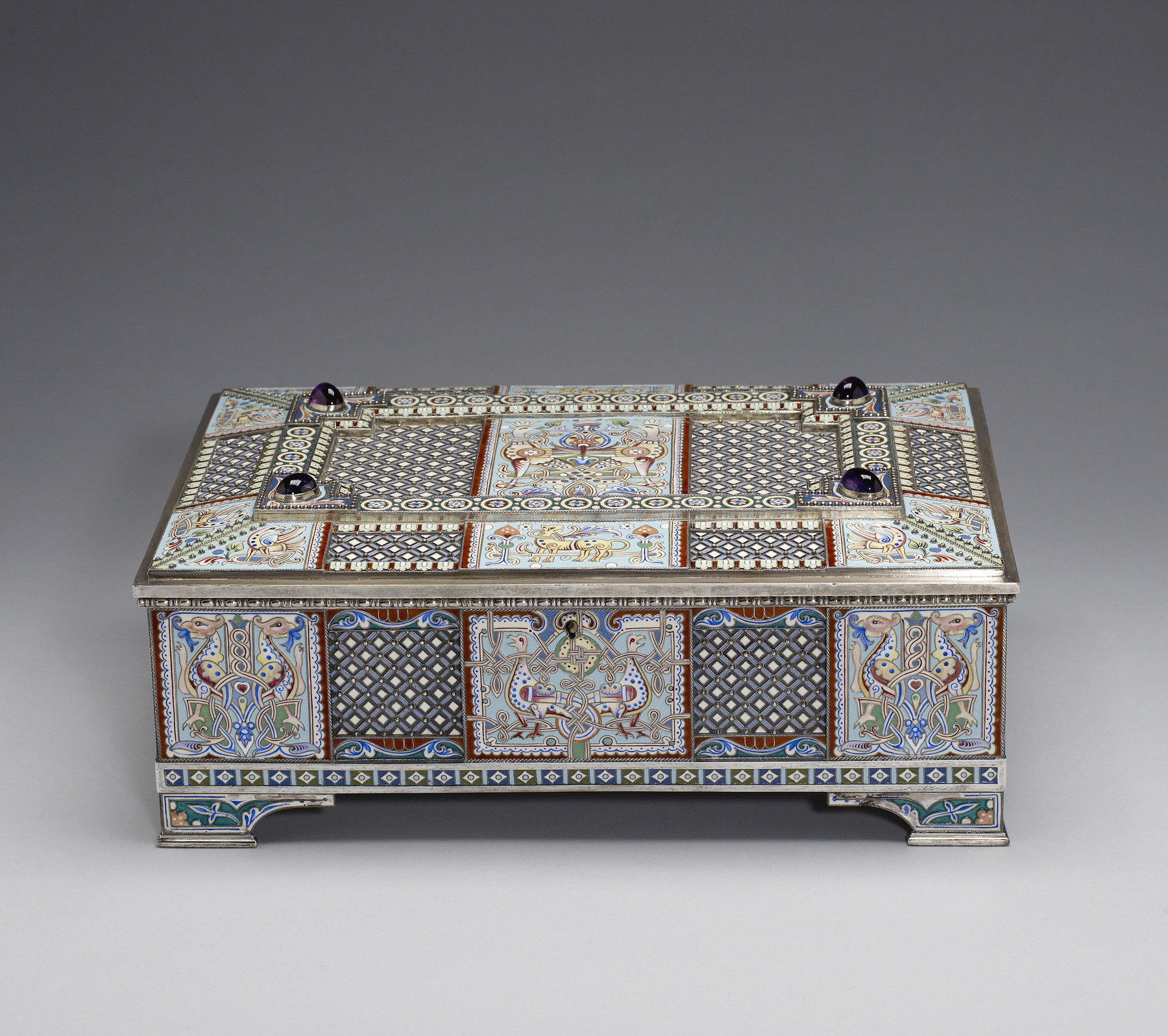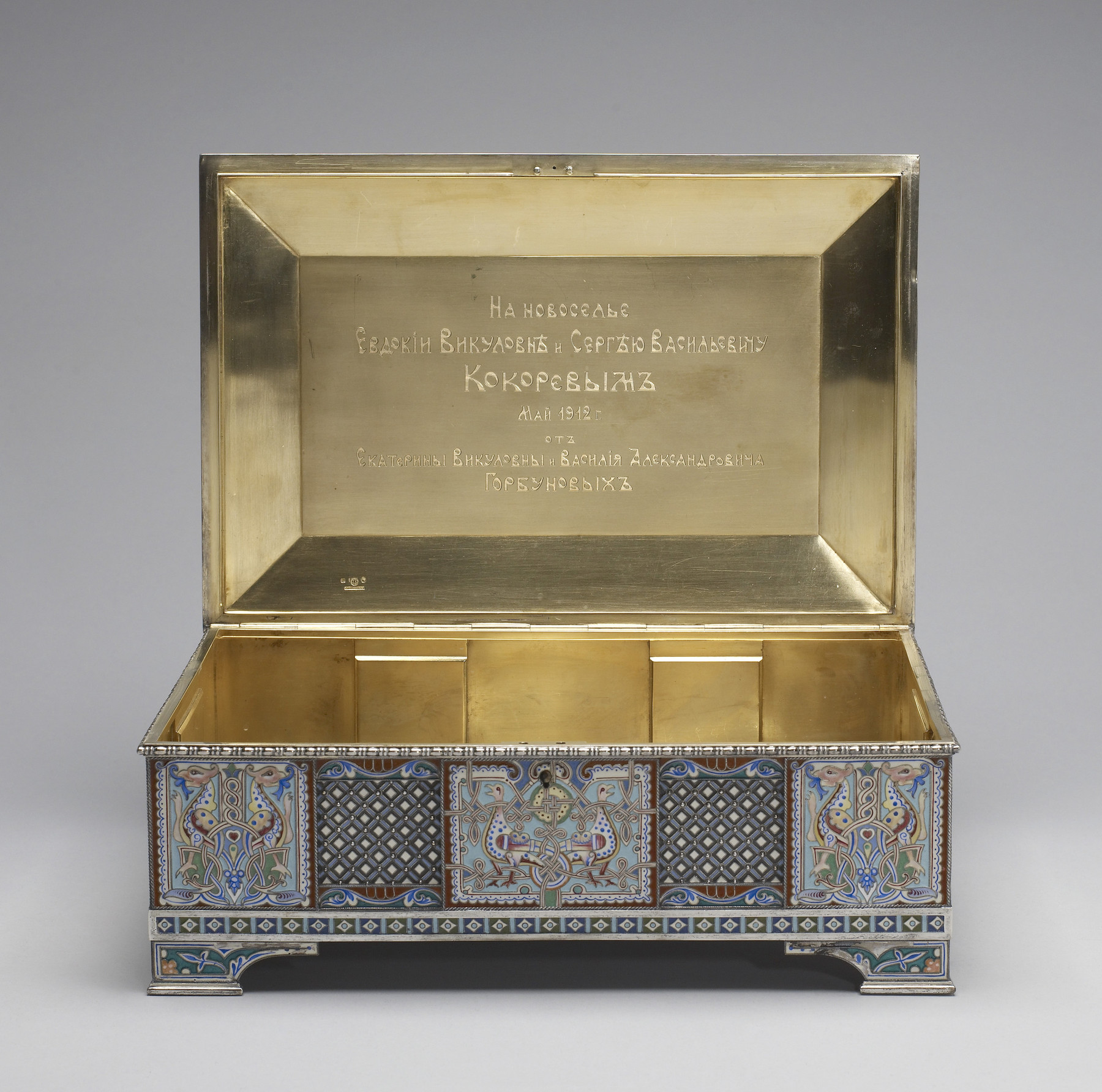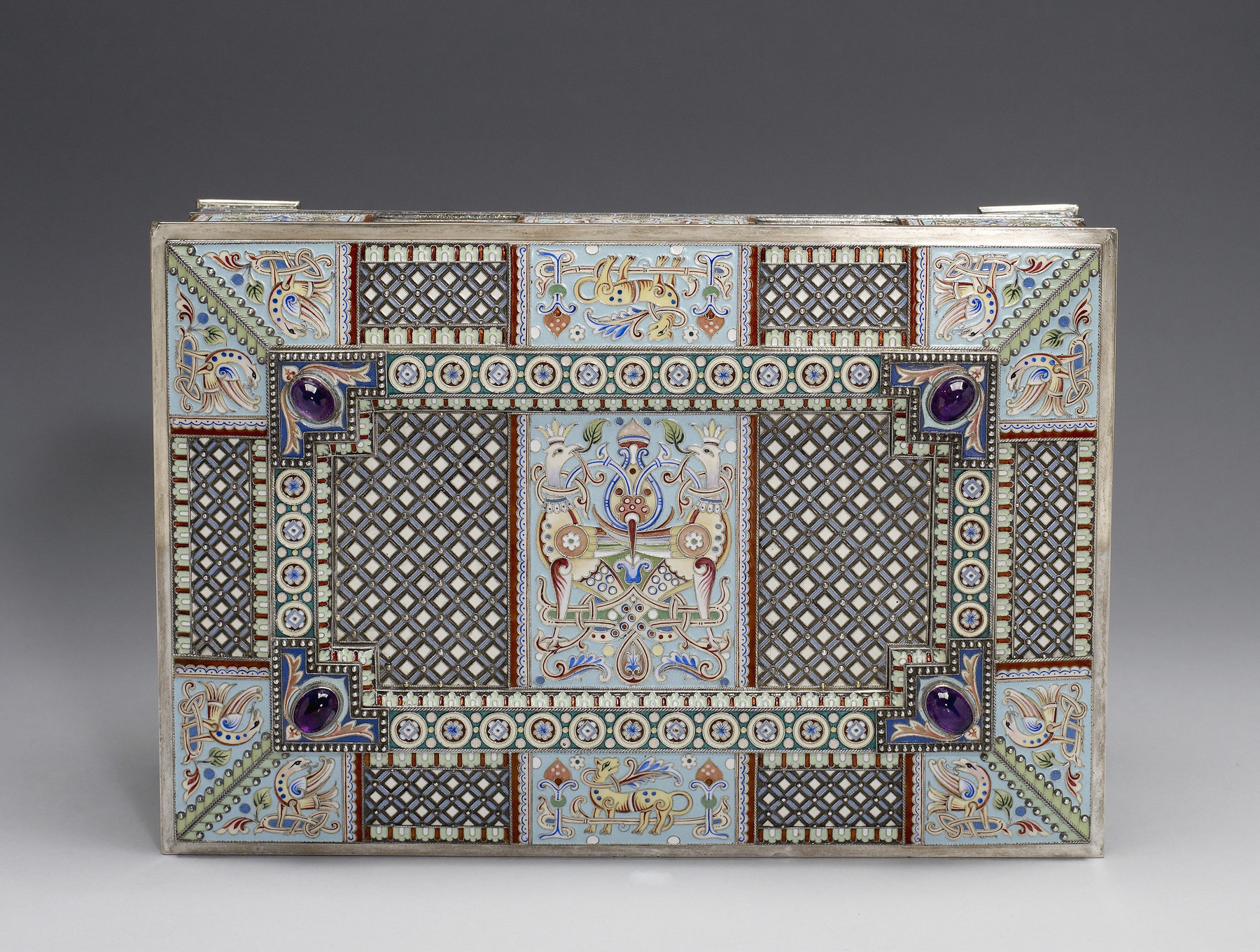Casket
(18th and 19th Centuries )
The casket's silhouette with its raised lid suggests that the form was derived from a teremok, the upper quarters assigned to women in a terem, a seventeenth-century Russian palace. The unusual enameled decoration includes rectangular reserves with fantastic winged creatures incorporated into patterns of Nordic interlace separated by trellis work with raised gilt dots suggesting roof tiles. In the center of the lid, a tree of life is flanked by two confronting griffins. On the lid's sides, there are tigers in the middle section and birds in the corners. Four cabochon amethysts have been applied to the roof corners.
The panels on the casket's sides show doves in the middle and pairs of crested birds with interlocking tails at either end. These creatures are enameled in cream, red, yellow, and green over a pale blue ground.
The source for this decoration lies not in earlier metalwork, but in manuscript painting. Viktor Butovskii's Histoire de l'Ornament Russe de Xe au XVIe Siècle d'après les manuscripts, published in 1870, provided the prototypes for the fantastic creatures. However, the blue dots on the birds' breasts, symbolizing fertility, are similar to those found on kolty, the enameled gold pendants produced in Kievan Rus during the 12th and 13th centuries.
Vasilii Alesandrovich Gorbunov (died: 1915) and his wife, Ekaterina Vikulovna, presented this box as a house gift to her sister, Evdokia, and her husband, Sergei Vasil'evich Kokorev, when the couple moved into a new residence in 1875. The two sisters were granddaughters of Elisei Savvich Morozov, the founder of the Morozov dynasty, a wealthy family of "Old Believers" in Moscow whose fortune was derived from a textile manufactory.
Inscription
Provenance
Provenance (from the French provenir, 'to come from/forth') is the chronology of the ownership, custody, or location of a historical object. Learn more about provenance at the Walters.
Jean M. Riddell, Washington, D.C. [date and mode of acquisition unknown]; Walters Art Museum, 2010, by bequest.
Exhibitions
| 2017-2018 | Fabergé and the Russian Crafts Tradition: An Empire's Legacy . The Walters Art Museum, Baltimore. |
Conservation
| Date | Description | Narrative |
|---|---|---|
| 9/3/2015 | Examination | Examined |
| 9/3/2015 | Examination | Examined in preparation for exhibition. |
Geographies
Russia, Moscow (Place of Origin)
Measurements
Overall H: 4 13/16 × W: 12 3/4 × D: 8 9/16 in. (12.3 × 32.4 × 21.7 cm)
Overall H with amethysts: 5 1/16 in. (12.8 cm)
Credit Line
Bequest of Mrs. Jean M. Riddell, 2010
Location in Museum
Not on view
Accession Number
In libraries, galleries, museums, and archives, an accession number is a unique identifier assigned to each object in the collection.
In libraries, galleries, museums, and archives, an accession number is a unique identifier assigned to each object in the collection.
44.755










